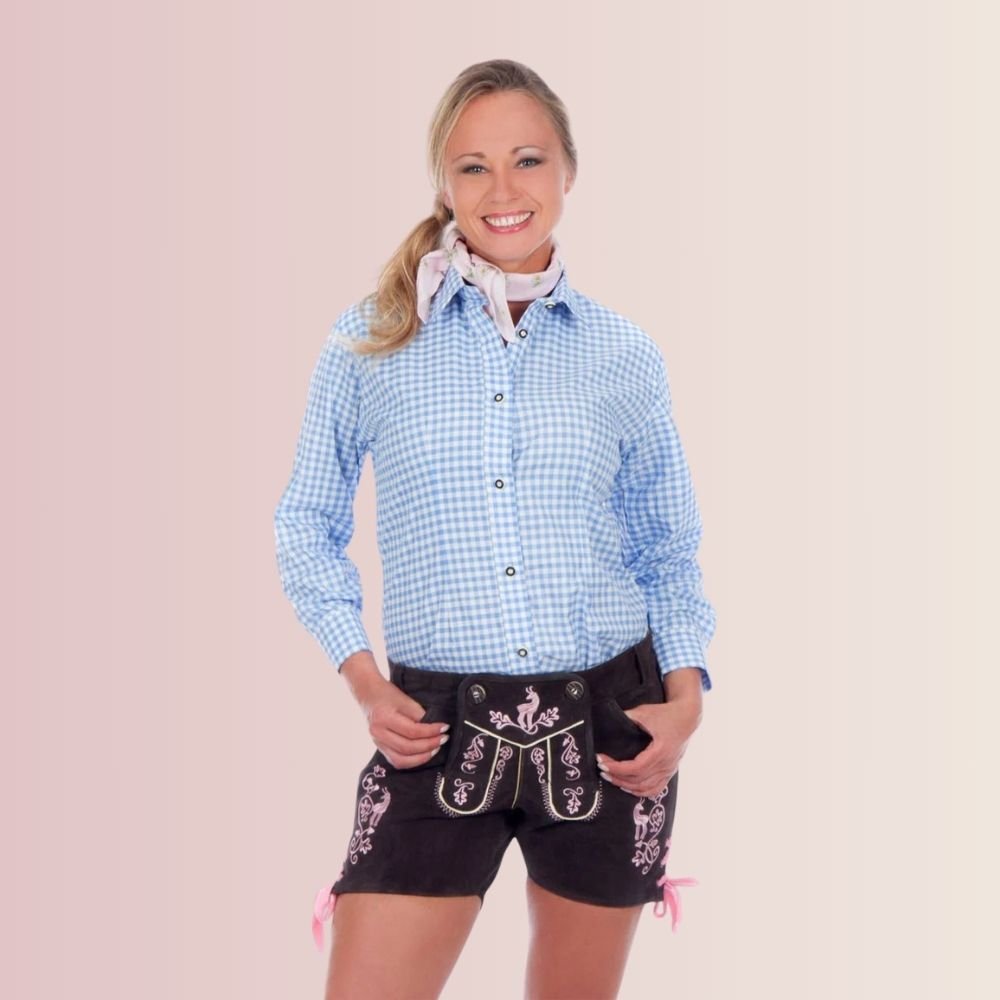Traditional German Attire
Traditional German attire, known as Tracht, represents centuries of cultural heritage through distinctive garments like Dirndls, Lederhosen, and Alpine jackets. These outfits evolved from practical workwear to symbols of national pride, prominently featured at festivals such as Oktoberfest and regional celebrations across Germany.
This comprehensive guide explores the history, regional variations, and modern adaptations of traditional German attire, offering valuable insights for cultural enthusiasts, fashion lovers, and anyone interested in authentic European folk costumes.
The Historical Roots of Traditional German Attire
Early Origins (16th-18th Century)
- Developed as durable workwear for farmers, hunters, and laborers
- Materials varied by region: leather in Bavaria, wool in Alpine areas, linen in southern regions
- Simple designs focused on functionality and longevity
Romantic Period (19th Century)
- Became symbols of cultural identity during German unification
- Nobility adopted folk styles to promote national heritage
- Regional distinctions became more pronounced and decorative
Modern Era (20th Century-Present)
- Oktoberfest transformed Tracht into globally recognized attire
- Contemporary designers blend traditional elements with modern fashion
- Recognized as UNESCO Intangible Cultural Heritage in some regions
Key Components of Traditional German Attire
Women’s Traditional Wear: The Dirndl
The Dirndl remains the most iconic element of women’s traditional German attire:
Construction Elements:
- Bodice: Tight-fitting, often featuring intricate embroidery
- Blouse: Typically white with puff sleeves
- Skirt: Full-length for formal occasions, knee-length for festivals
- Apron: Colorful fabric with symbolic knot placement
Cultural Significance:
- Apron bow position indicates marital status:
- Left side = single
- Right side = married
- Back = widowed
- Different colors represent various German regions
Men’s Traditional Wear: Lederhosen
Lederhosen (leather breeches) form the foundation of men’s traditional German attire:
Design Features:
- Made from durable deer or goat leather
- Characteristic front flap (Latze) with decorative buttons
- Embroidered suspenders (Hosenträger)
- Practical pockets for tools and accessories
Modern Adaptations:
- Shorter versions for summer wear
- Dressier styles with refined embroidery
- Contemporary materials for improved comfort
Regional Variations in German Tracht
Bavarian Traditional Attire
- Most internationally recognized style
- Vibrant colors and elaborate embroidery
- Features feathered hats for men and elaborate Dirndls for women
Black Forest Traditional Attire
- Distinctive Bollenhut (hat with red pom-poms)
- Darker color palette with red accents
- Heavy wool fabrics for colder climate
Alpine Traditional Attire
- Practical designs for mountain living
- Thick wool jackets with horn buttons
- Sturdy leather shoes with heavy treads
Northern German Traditional Attire
- Simpler, more utilitarian designs
- Muted color schemes
- Influenced by maritime traditions
Traditional German Attire in Contemporary Fashion
Modern Interpretations
- Slim-fit Dirndls for urban wear
- Lederhosen-inspired shorts for casual outfits
- High-fashion adaptations by luxury brands
Sustainable Tracht
- Eco-friendly materials like organic cotton
- Ethical production methods
- Revival of traditional crafting techniques
Where to Purchase Authentic Traditional German Attire
Local German Retailers
- Specialty shops in Munich and Bavaria
- Family-owned Tracht boutiques
- Regional craft cooperatives
Online Marketplaces
- Dedicated Tracht websites
- Artisan platforms like Etsy
- Specialty European clothing retailers
Festival Purchasing
- Oktoberfest vendors
- Cultural festival pop-up shops
- Christmas market stalls
Caring for Your Traditional German Attire
Fabric-Specific Care Instructions
- Leather maintenance for Lederhosen
- Delicate washing for embroidered pieces
- Proper storage techniques
Seasonal Care
- Winter storage preparations
- Summer wear maintenance
- Travel care for festival attendance
The Cultural Significance of Traditional German Attire Today
Preservation Efforts
- Museum collections and exhibitions
- Cultural heritage organizations
- Craftsmanship apprenticeship programs
Modern Celebrations
- Oktoberfest and other folk festivals
- Wedding traditions
- Cultural performance attire
Conclusion: The Enduring Legacy of German Tracht
Traditional German attire continues to captivate people worldwide, blending historical authenticity with contemporary style. From the beer tents of Munich to fashion runways in Paris, these garments maintain their cultural significance while adapting to modern tastes.
Whether you’re attending a festival, honoring your heritage, or simply appreciating fine craftsmanship, traditional German attire offers a tangible connection to centuries of European history and tradition. By understanding its evolution and regional variations, we can better appreciate this living cultural legacy that continues to evolve while staying true to its roots.








Reviews
There are no reviews yet.